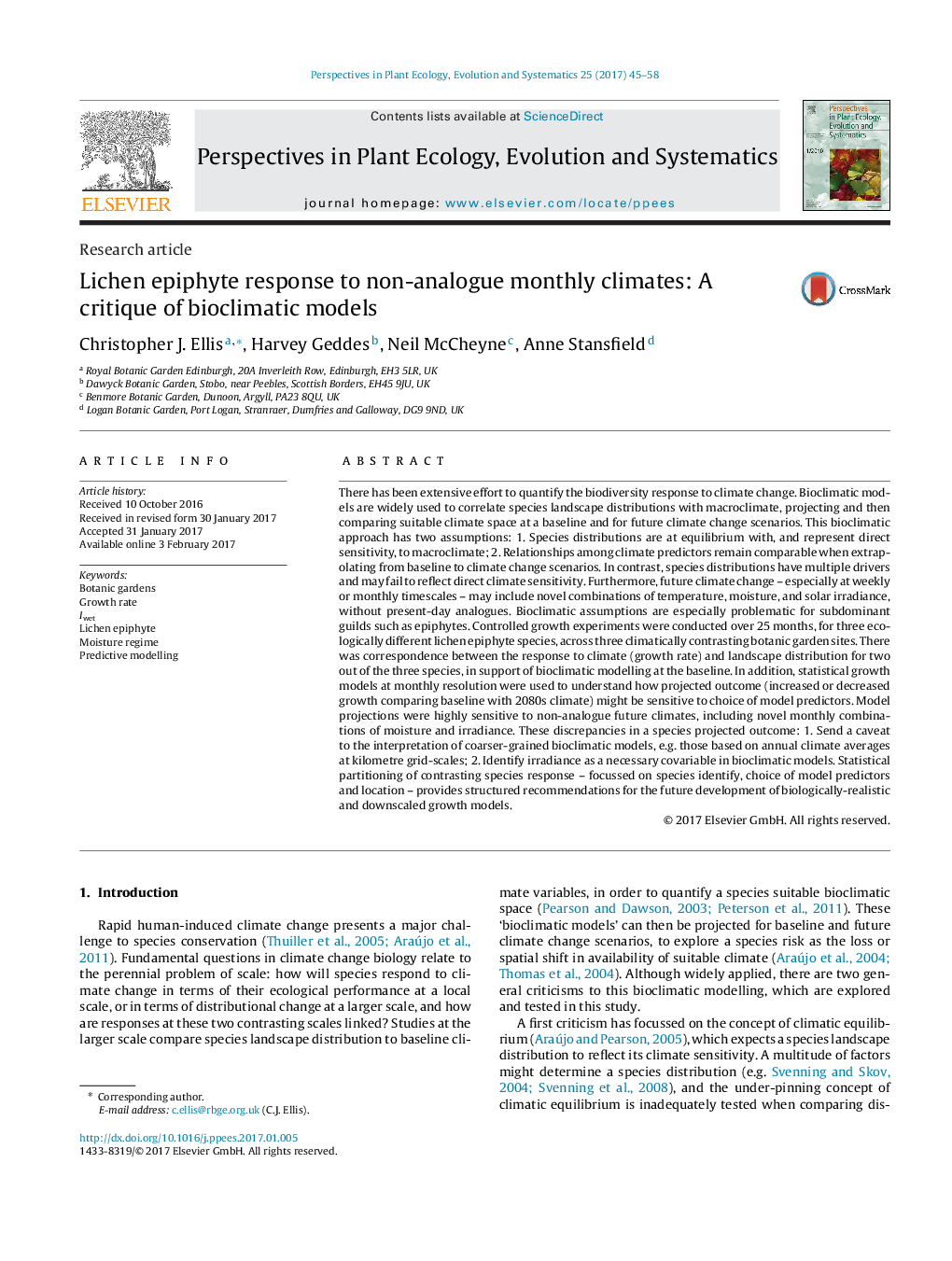| کد مقاله | کد نشریه | سال انتشار | مقاله انگلیسی | نسخه تمام متن |
|---|---|---|---|---|
| 5744972 | 1618595 | 2017 | 14 صفحه PDF | دانلود رایگان |
- Bioclimatic models are widely used to understand the biodiversity response to climate change.
- Down-scaled statistical growth models tested the validity of large-scale bioclimatic modelling, for lichen epiphytes.
- Epiphyte response was sensitive to (i) non-analogue climate and irradiance, (ii) choice of variables for the same parameter (moisture).
- Models based on annual/seasonal climates may be misleading. Species response may be governed by short-term (monthly) non-analogue conditions.
There has been extensive effort to quantify the biodiversity response to climate change. Bioclimatic models are widely used to correlate species landscape distributions with macroclimate, projecting and then comparing suitable climate space at a baseline and for future climate change scenarios. This bioclimatic approach has two assumptions: 1. Species distributions are at equilibrium with, and represent direct sensitivity, to macroclimate; 2. Relationships among climate predictors remain comparable when extrapolating from baseline to climate change scenarios. In contrast, species distributions have multiple drivers and may fail to reflect direct climate sensitivity. Furthermore, future climate change - especially at weekly or monthly timescales - may include novel combinations of temperature, moisture, and solar irradiance, without present-day analogues. Bioclimatic assumptions are especially problematic for subdominant guilds such as epiphytes. Controlled growth experiments were conducted over 25 months, for three ecologically different lichen epiphyte species, across three climatically contrasting botanic garden sites. There was correspondence between the response to climate (growth rate) and landscape distribution for two out of the three species, in support of bioclimatic modelling at the baseline. In addition, statistical growth models at monthly resolution were used to understand how projected outcome (increased or decreased growth comparing baseline with 2080s climate) might be sensitive to choice of model predictors. Model projections were highly sensitive to non-analogue future climates, including novel monthly combinations of moisture and irradiance. These discrepancies in a species projected outcome: 1. Send a caveat to the interpretation of coarser-grained bioclimatic models, e.g. those based on annual climate averages at kilometre grid-scales; 2. Identify irradiance as a necessary covariable in bioclimatic models. Statistical partitioning of contrasting species response - focussed on species identify, choice of model predictors and location - provides structured recommendations for the future development of biologically-realistic and downscaled growth models.
Journal: Perspectives in Plant Ecology, Evolution and Systematics - Volume 25, April 2017, Pages 45-58
